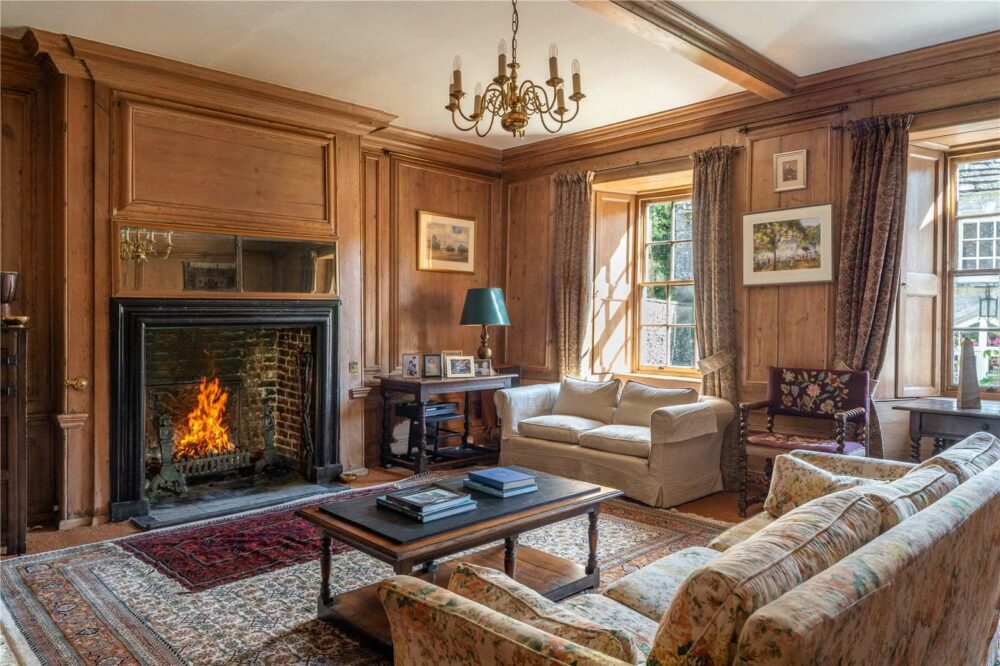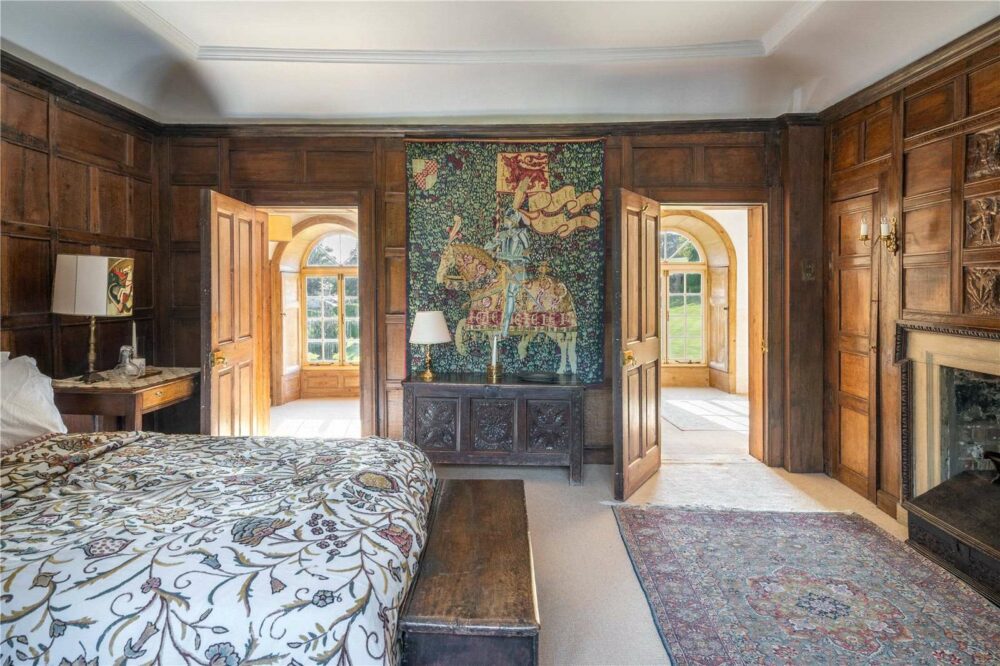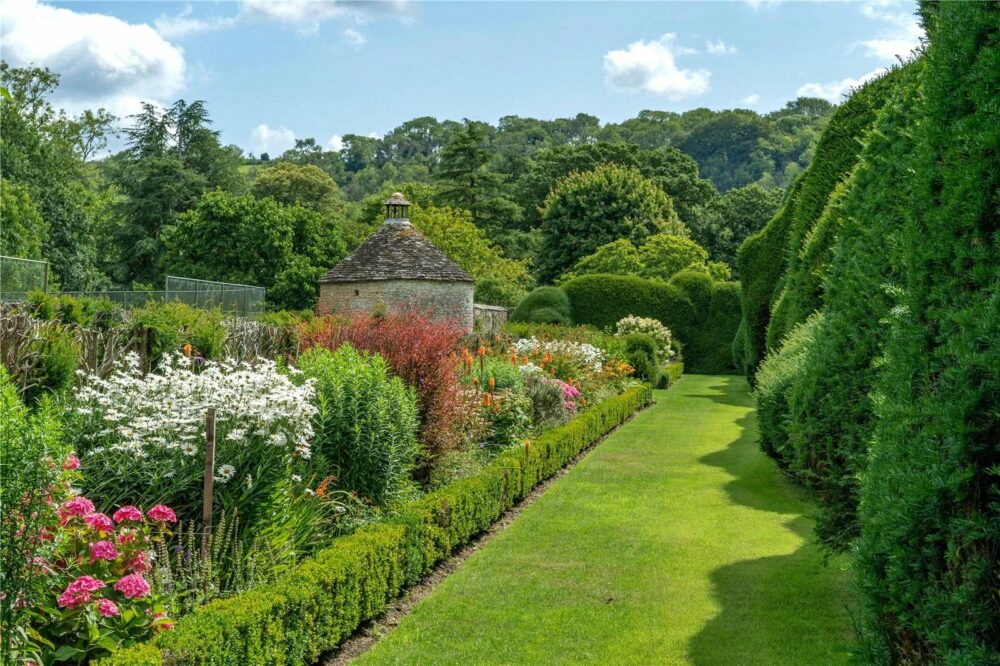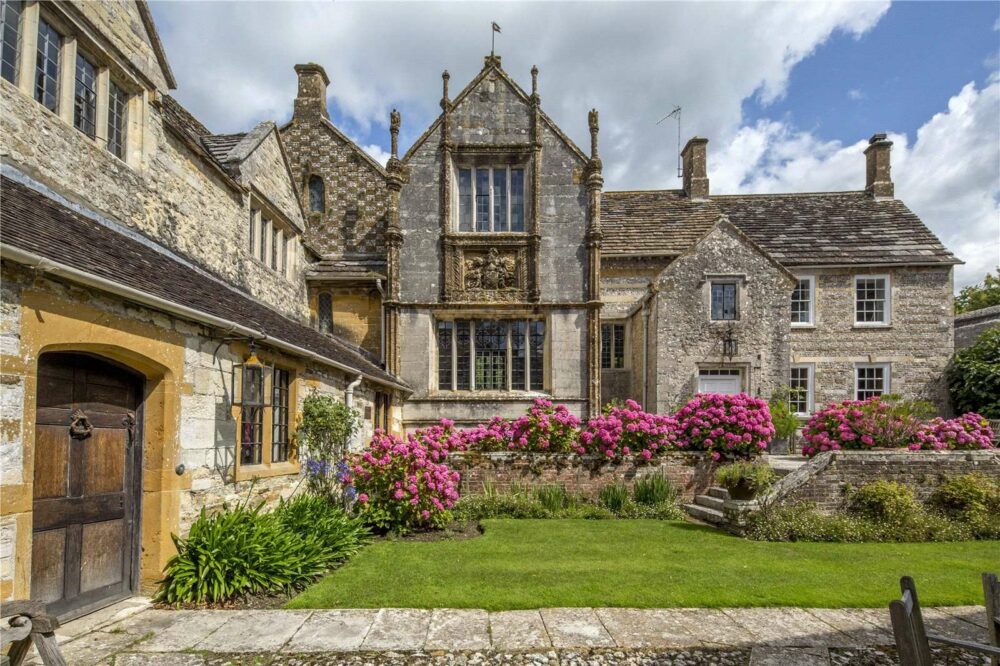About this property
Bingham’s Melcombe Manor House, located in the parish of Melcombe Horsey, has a rich history dating back to the medieval period.
The property takes its name from Robert Bingham, who acquired it in the 13th century through marriage with Lucy, the daughter and heiress of Sir Robert Turberville. The house remained in the Bingham family’s possession for over six hundred years until 1895.
One of its most notable owners was Sir Francis Bingham, a prominent politician during the Tudor era and a Member of Parliament in the court of Queen Elizabeth I. His political influence allowed him to further develop and enhance the property.
The manor is constructed around an irregular courtyard and features various architectural styles from different periods. The Gatehouse, which serves as the entrance to the courtyard, is thought to have been built in the early 14th century, and it remains one of the earliest complete surviving parts of the house.
Throughout the years, various wings and ranges were added to the manor, resulting in an informal and picturesque grouping of buildings. The oriel in the Hall, with its elaborate Renaissance Italianate style, is considered a remarkable architectural feature, attributed to a regional group of mason-sculptors.
In the mid-20th century, the gardens of Bingham’s Melcombe were restored by Sir Geoffrey Jellicoe, a renowned landscape architect whose contribution to landscape design was highly regarded.
Despite the occasional confusion in names and references to neighbouring settlements, Bingham’s Melcombe has maintained its historical significance and remains an outstanding example of a medieval manor house with later architectural additions. The property has been in the same family ownership for over 40 years.
The house has been in the same family for two generations and is a warm, welcoming family home with enormous charm and historical pedigree. It is undoubtedly one of Dorset’s finest, undiscovered and untouched treasures.
The house is approached over a dramatic entrance drive through the remarkable 14th Century Gate House, which serves as an entrance to the courtyard, and is one of the earliest complete surviving parts of the house. The reception hall, believed to be medieval, was extensively remodelled in the 18th century with the addition of an oriel and an arda stone stair. The interiors also boast a mix of 17th and 18th Century panelling, elaborate chimney pieces and original fireplaces. Notably, the sitting room features a mid 18th Century chimneypiece with Adam and Eve figures and the east wing contains an early 18th Century marble chimneypiece.
From the grand reception hall, which enjoys access to a small walled garden of its own, there is a lovely panelled drawing room, and stairs lead up to the games room on the first floor. A beautiful, light sitting room with high ceilings has doors out to the west lawn. A garden hall has stone spiral steps to the first floor. A cloistered corridor leads to the dining room and adjacent kitchen/breakfast room.
In the main part of the house there are 5 bedrooms and 4 bathrooms (all ensuite), the fifth being a single bedroom with a WC and wash basin across the landing.
In the south wing, and approached through the Gate House by two separate staircases, are 4 further bedrooms and 2 further bathrooms.
To the south is a courtyard with a range of stores.
To the east is a substantial thatched 17th century Grade II listed stable building with tack room, 2 loose boxes, stores and loft.
Between the Stable Block and Dower House is a large red brick garage building with 2 open fronted stores, garaging for up to 8 cars and a workshop and storage above.
The gardens are largely attributed, in their present form, to Sir Geoffrey Jellicoe, who laid them out after the Second World War for Lord Southborough. They are mostly laid out to the north and west of the house, with further areas of informal pleasure grounds in the valley of the Devil’s Brook to the east.
The formal gardens are laid out in a series of terraces, the lowest terrace comprising the kitchen garden, bordered by neat gravelled paths, and with 2 greenhouses and a potting shed.
The middle lawn, also accessed by a stone flagged terrace by the west front, is the Bowling Green, a level rectangular lawn bordered to the north by a huge mature yew hedge and a mid 18th century Grade II listed brick wall which also encloses the south and west side of the kitchen garden.
The upper terrace is divided into discrete garden areas with a summer house, tennis court and Grade II listed, 17th century dovecote. To the north of the house is a charming knot garden and a romantic summer house within a high stone wall.
A broad grass walk beyond the west garden wall leads to a lime avenue underplanted with rhododendrons to reach a mid 18th century Grade II listed stone bridge which crosses the Devil’s Brook. Nearby is a cascade with a small stone mill (listed Grade II). The floor of the nearby valley is laid out with formal water gardens comprising three pools linked by a narrow channel and planted with specimen trees to a 20th century scheme by Brenda Colvin.
The park lies to the north and south of the manor, interspersed by mature parkland trees. Open farmland stretches to the west, all the land being actively farmed and grazed on a licence to a local farmer.
Approached over the main drive, and set in over 6 1/2 acres of gardens overlooking the Devil’s Brook, the Grade II listed Dower House, formally the Old Rectory for the Church next door, is a wonderful house in its own right. Of stone and flint under a tile roof with stone mullion windows and leaded lights, the house comprises on the ground floor 3 reception rooms, a cloakroom WC, kitchen and boiler room; on the first floor 3 bedrooms and the second floor a further bedroom, bathroom and attic storage.
The Dower House is currently used as offices and will require modernisation and the relevant planning consents to be returned to a private residence.
Linked to the house are outbuildings and a charming Coach House with garage bay and former stables, and provide enormous potential for incorporation into the ground floor living area subject to the usual planning and listed consents.
To the east of the Church is The Old School Room, a traditional single-storey building. Ground are about 6.57 acres.
With access over the farm drive to the west are a pair of semi-detached cottages of rendered construction under slate –
No.1 Garden Cottage: 3 bedrooms, bathroom, kitchen, living room and a small dining room. In 0.27 acres.
No.2 Garden Cottage: 3 bedrooms, bathroom, dining room and utility room. In 0.61 acres.
To the north of the estate and accessed from a lane to the east is Peck Mill, an attractive 3-4 bedroom former mill house set within its own pretty gardens of approximately 5.64 acres.
Local information
- Bingham Melcombe occupies its own hamlet, the only other building in the cluster of dwellings being the Church, one mile from the slightly larger village of Melcombe Bingham. The estate is surrounded by open farmland which forms an impressive backdrop on all sides.
- The A354 is 6 miles to the south giving access to the A31 and A35 and Sherborne is 16 miles to the north with trains to Waterloo in 2.25 hours. Bournemouth Airport is a 45 minute drive.
- For immediate needs, there is a good convenience store in Ansty (1 mile) while more comprehensive amenities can be found in Blandford, Dorchester or Sherborne.
- The area offers a good selection of Prep Schools, such as Hanford, Bryanston Prep, formerly Knighton House, Sandroyd and Sherborne with Public Schools, Bryanston, Canford, Milton Abbey and Sherborne boys and girls also close by.
Additional information
- WAYLEAVES, EASEMENTS AND RIGHTS OF WAY
- The estate is sold subject to all such rights of way and easements which may exist.
- A public footpath runs broadly east to west through the estate and other public footpaths are shown on the sale plan.
- A right of way to the Church exists over the main drive, together with associated parking rights. Access to the church is permitted for church services and for anyone visiting graves by car during the day.
- Access rights, services and easements to individual lots are to be negotiated dependent on the split of the sale.
- Access to Lot 3 is over the back drive between points F-E, and to Lot 4 over the back drive between F-E-D. Access to Lot 2 is over the main drive only between points A-B-C.
- PLANNING
- Bingham’s Melcombe is Grade I listed.
- The Dower House, Gate piers, dovecote, old mill, garden walls are listed Grade II.
- The Park is listed Grade II* on the parks and gardens register due to its scientific interest.
- Agents note:
- Binghams Melcombe House currently has a commercial EPC rating: D
- The Dower House currently has a commercial EPC rating: G
- Directions: From the A31, take the A35 at Bere Regis and at the junction with the A354 on the outskirts of Puddletown, take the slip road signed to Milbourne St Andrew crossing back over the A35. Take the first left and after 200m, the first right into Long Lane. Follow signs to Dewlish and proceed through the village. After about 4 km the entrance gates are on the right. POSTCODE: DT2 7PZ What3Words: ///zones.emptied.sofas
- EPC Rating: E
- Tenure: Freehold






